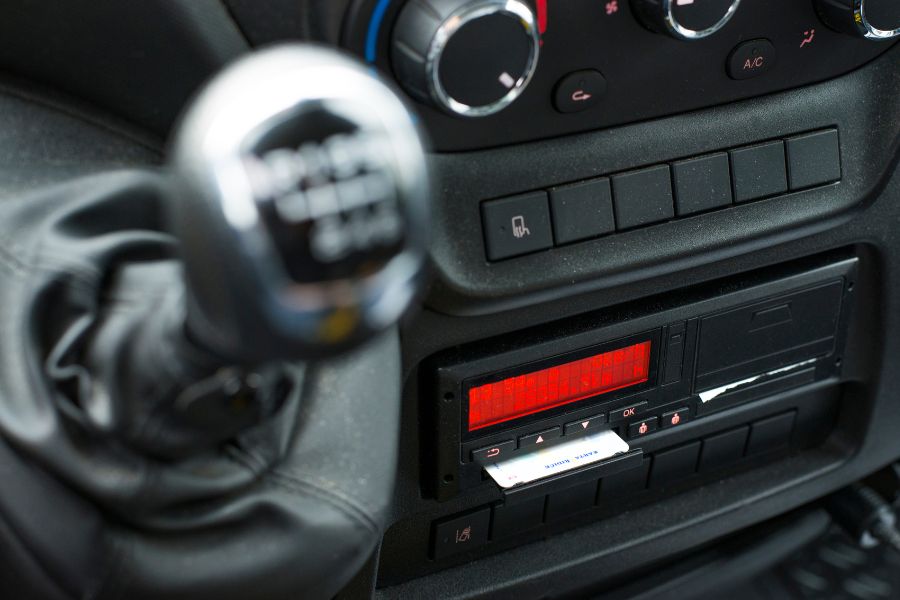The digital tachograph is the modern version of the tachograph and replaces the earlier analog devices. It is a legal requirement in many commercial vehicles within the EU and automatically documents driving and rest times, speeds and distances traveled. For companies, it is not only mandatory, but also an important tool for transparency and efficiency in fleet operations.
Structure and use
A digital tachograph consists of the device permanently installed in the vehicle and a driver card on which personal data is stored. Companies also receive a company card to access the stored data.
Legal requirements
The obligation to use is regulated in Regulation (EU) No. 165/2014:
- All vehicles over 3.5 tons must be equipped with a digital tachograph.
- Since August 2023, the obligation also applies to light commercial vehicles from 2.5 tons in international traffic.
- The driver card must be read at least every 28 days, the device every 90 days.
- Data must be archived for at least one year and made available to the authorities on request.
- Companies are obliged to train drivers in the use of the system.
Advantages in fleet management
In addition to compliance with legal regulations, the digital tachograph offers further advantages:
- Clear transparency about driving behavior and vehicle utilization
- Early detection of rule violations
- Central data management through modern fleet software
- Optimization of tours and deployment planning
Conclusion
Today, the digital tachograph is an indispensable tool for complying with social regulations in road traffic. In addition, its digital data basis enables the professional and efficient organization of vehicle fleets.

